In the last post in this series, covering Carolyn's any my odyssey down-under between October to February 2022 - 2023; with our trip starting in Vancouver then moving to Hawaii, Fiji, New Zealand, North and South Islands and arriving in Australia just before New Year, I left off with us having spent a spectacular few days in the Lamington National Park and the O'Reilly's Rainforest Retreat, link below, and setting off on the relatively short drive, back to the coast and the sunny city of Brisbane
 |
| JJ's on Tour - O'Reilly's Rainforest Retreat and The Lamington National Park |
Brisbane is the capital city of Queensland, the third most populous one in Australia, home to an approximate population of 2.6 million people.
 |
| Our route so far on our travels through Australia, starting down in Melbourne just before New Year 2023. Map courtesy of https://www.freeworldmaps.net/australia/ |
As in previous posts I've included a map of the part of town we were staying in together with numbered areas to allow you to better follow the account of our stay and the pictures we took of this wonderful city.
During his time in the bay he named many of its key features, Point Skirmish, named for obvious reasons, Pumice Stone River, Moreton Island amongst others and the map below illustrates his travels and makes interesting comparison with the modern satellite appearance of this area of the Australian coast.
Whilst repairs were carried out on the Norfolk, Flinders led a party to the Glass House Mountains, marked top left on the map above, climbing Mount Beerburrum to get a good view of the area, whilst also leaving this account of his journey;
 |
| Brisbane city centre astride the Brisbane River and with the areas we visited highlighted. https://www.brisbane-australia.com/brisbane-city-map.html |
The recorded history of Brisbane starts in 1799 when Captain Mathew Flinders RN explored Moreton Bay for a couple of weeks from the 14th of July, on an expedition from Port Jackson, Sydney, which he departed from on the 8th of July.
 |
| Captain Mathew Flinders circa 1806-07 |
Landing on Bribie Island on the 16th July, Flinders and his crew ended up in a skirmish with local Ngunda people and Flinders left an account of the encounter in his book 'A Voyage to Terra Australis, Volume One'
'On the 16th, whilst beating up amongst the shoals, an
opening was perceived round the point; and being much in want of a place to lay
the sloop on shore, on account of the leak, I tried to enter it; but not
finding it accessible from the south, was obliged to make the examination with
the boat, whilst the sloop lay at anchor five miles off. There was a party of
natives on the point, and our communication was at first friendly; but after
receiving presents they made an attack, and one of them was wounded by our
fire. Proceeding up the opening, I found it to be more than a mile in width;
and from the quantities of pumice stone on the borders, it was named
Pumice-stone River. It led towards the remarkable peaks called the Glass
Houses, which were now suspected to be volcanic, and excited my curiosity.'
Flinders carried on with his exploration of the bay whilst beaching the cutter Norfolk at Bribie Island to make needed repairs.
 |
| Flinders' sloop or cutter, Norfolk |
During his time in the bay he named many of its key features, Point Skirmish, named for obvious reasons, Pumice Stone River, Moreton Island amongst others and the map below illustrates his travels and makes interesting comparison with the modern satellite appearance of this area of the Australian coast.
 |
| The Flinders map of his explorations in what became known as Moreton Bay. Note the glaring omission of what became known later as the Brisbane River. |
'we proceeded down the river; but owing to strong winds and
squalls from the south-east, did not clear it before the 31st. Some
communications with the natives had been obtained whilst the sloop was lying on
shore; and this detention afforded opportunities of repeating them. I am happy
to say they were all friendly, which is attributable to their opinion of us
having undergone a salutary change from the effect of our fire arms at Point
Skirmish.'
Interestingly neither Cooke, who sailed past Moreton Bay in 1770 or Flinders during his 1799 expedition discovered the large river that empties into it.
In 1817, the Earl Bathurst, Colonial Secretary to Lord Liverpool's Conservative government expressed his concerns that transportation to New South Wales was no longer a deterrent to the 'criminal class' and that word had travelled of the success of some former convicts in the new land especially during the term of office of Governor Lachlan Macquarie as Sydney's governor 1810-21.
 |
| JJ's on Tour - Sydney, Australia |
Check out my post covering Sydney, link above, where I looked at the very futuristic ideas of reform that Governor Macquarie and indeed his wife Lady Macquarie, brought to the approach in managing the Sydney Penal Colony and convict rehabilitation back to law abiding citizens in the growing civil colony of New South Wales.
 |
| Surveyor-General John Oxley |
In 1819 Bathurst commissioned a report on how to restore the 'terror' to transportation, which resulted in a proposal in 1823 for the establishment of a new colony where recidivist convicts would be subjected to the harshest treatment, and in that year New South Wales Governor, Thomas Brisbane instructed Surveyor-General John Oxley to explore the Moreton Bay area for a suitable site for the new penal settlement.
 |
| Old and new, Queen's Gardens (Point 1 on the map above), the 19th century Brisbane stands in stark contrast to the buildings behind of the new 21st century city |
The remoteness of the bay from Sydney and other European settlements seemed to commend the area for this plan and in late November 1823, Oxley began his exploration, having the happy benefit of finding three men, Thomas Pamphlet, John Finnegan and Richard Parsons, all of whom had landed in the area in March, their boat having been driven out to sea and adrift from Sydney; and they, having survived the ordeal thanks to the local Indigenous people, led Oxley to the wide river, they had first seen in June and was the first European sighting of the Brisbane River, the name given to it by Oxley in honour of the New South Wales Governor.
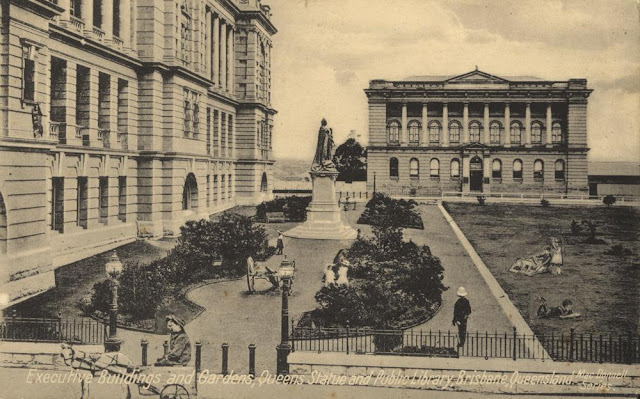 |
| Her Majesty and Empress Queen Victoria in situ in Brisbane circa 1910 |
In May 1825 with the arrival HM Brig Amity at Redcliffe, originally identified as the initial site for the new settlement together with Oxley, Lieutenant Henry Miller 40th Foot and his soldiers, Mr Alan Cunningham a botanist plus thirty convicts, fifty-four souls in all, the decision was taken to relocate to the banks of the Brisbane River.
 |
| Her Majesty still looking resplendent in 2023 |
The colony and the farming settlements around it would grow over the next three decades, that would see, in face of growing costs of administering a penal colony and demands from settlers to the area for greater access to the port facilities of Moreton Bay, the abolition of the penal colony in 1842 and in 1859 Queensland declared a separate colony, with its capital Brisbane.
 |
| The Moreton Bay Penal Settlement circa 1835 |
The foundations of the original Brisbane are there to be seen for the interested visitor, in a city barely two-hundred years old, with the old British Imperial architecture embraced by the modern new vibrant Australian buildings.
 |
| My mum was a volunteer W.A.A.F. in WWII and it was great to see this recognition of the contribution made by women of her generation and Australian women in particular to the Allied victory in WWII. |
Seeing the memorial stone to Australian service women in WWII reminded me of my Mum's recollections of that time, volunteering for service in the Women's Auxiliary Air Force in 1943, doing her square-bashing in a cold winter Morecombe, before being sent from her home in Grimsby, Lincolnshire to join Number Ten Group, Royal Air Force, as a plotter for radar and home defence, covered in my post back in 2015.
 |
| LAC Audrey Randell, Exeter 1943 JJ's Wargames - Mum's War |
Making our way down to the river along which John Oxley and Lieutenant Miller made their explorations, we made our way along the north bank from the archways that heralded the access to the old Brisbane Bridge opened in June 1865, Point 3 on the map.
 |
| Victoria Bridge seen here in 1933 with its iconic stone abutments that are still to be seen today |
Following the course of the river we made our way to the Botanical Gardens, Point 4, on the map, built on the site of the old penal colony's farm area that provided much of its locally grown produce, but now days is a marvellous riverside park.
Established in 1855 as a botanic reserve under its first curator Superintendent Walter Hill, the gardens became home to some of the first new species of tree planted in Australia and would see the gardens expand to some twenty-seven acres together with the planting of the first Jacaranda and Poinciana flowering trees, now popular garden trees in Queensland; and it is claimed that all Jacaranda trees in Australia are descended from the original seed imported by Hill back in 1864.
 |
| Dusky Moorhen, Gallinuala tenebrosa and chicks, looking very similar to the European Moorhen |
 |
| Now you don't see something like this climbing out of your local park pond every day, well not unless you live in Brisbane! |
 |
| Bush Stone Curlew, Burhinus grallarius, enjoying a promenade in the gardens |
The lush foliage in these gardens seemed to really emphasise the transition from temperate to tropical and were a good introduction to the kind of terrain and plant life we would experience later on in our travels.
 |
| Another familiar and impressive sight in the Lamington Forest and likewise here in Brisbane was this array of mighty Strangler Figs. |
As mentioned, the history of Brisbane is there to be seen for anyone interested to look and this impressive naval cannon, a 24-pounder and bearing the famous Scottish Carron iron foundry markings dated 1803, the company that invented the short barrelled carronades or 'ship smashers', is one of twelve such guns delivered for the defence of the the new colony of Queensland in 1862, to be set up as a battery in Queen's Park.
This gun, beautifully restored, was reinstated overlooking the Brisbane River in 2015.
 |
| Looking out across the Brisbane River to Kangaroo Point from the Botanical Gardens. |
 |
| A bit further along the riverside path at the botanical gardens you can see the mangroves that likely characterised much of the river when it was first discovered |
 |
| Every now and then you would see something scurrying between the mangrove roots |
Following our exploration of the north bank we crossed the river to take a look at the southern side, working our way along the river to the South Bank Parklands, Point 5, on the map, opened in 1992 as a public area of shops, restaurants, plazas, the grand arbour, the Nepalese Peace Pagoda as well as parkland, home to rainforest trees and opened grass areas that are used for large public open air events and festivals.
 |
| The Grand Arbour leads the visitor into the main plaza and restaurant area around swimming pools looking out across the river to the city |
As I said, we both loved our stay in the city.
 |
| A bit of R&R, Brisbane Style. Living the Dream! |
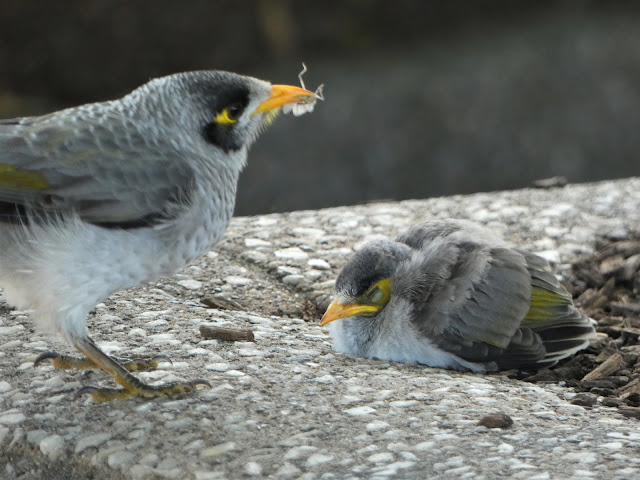 |
| These common honeyeaters have moved into the city from their more normal habitat of forest edge and woodland. |
As mentioned, during our stay in Brisbane we took the opportunity of catching up with friends who live in or near the city, getting to enjoy their company over dinner and experiencing the city by night.

 |
| Yet more R&R Brisbane Style, great memories, good times. |
 |
| Queensland Maritime Museum |
Obviously with the current theme running on JJ's at the moment, maritime history is very much front and centre in my thinking and during our visit to Australia, the National Maritime Museum in Sydney was very much part of the plan to be included in places visited during our stay, so the Queensland museum was very much a case of 'unplanned fortune', containing in its collection some very unique items, that anyone with a maritime historical interest would regret not seeing.
You can find out more about the museum in the link above.
Amongst the collection of items recounting Queensland's relationship and history with the sea, the museum hosts a marvellous collection of models ranging from the age of sail, through to that of the steam turbine, and it was fun comparing the impression they created versus seeing the full size replicas of the Endeavour and Duyfken for example, and in the case of the Krait, the actual vessel, back in Sydney.
 |
| Wreck Reef, bottom left, the wreck site of the Sloop Porpoise, lost 17th August 1803, and one of its anchors recovered in 1965. |
The Porpoise was bound for England via the Torres Strait in company with two merchantmen, the Cato and the Bridgewater, when she ran aground, with a VIP passenger aboard, non other than Captain Mathew Flinders, who took command of the survivors and organised the repair of the Porpoise's cutter, managing later to sail in it with twelve other survivors to Port Jackson to organise a rescue of the other survivors, this after the Cato was likewise wrecked and the Bridgewater having sailed on without effecting any help.
The old anchor, recovered by sports divers in 1965, lay uncared for for many years until rediscovered and restored by the museum during a ten month period of electrolysis to stabilise the iron and at the same time remove the centuries of salt absorbed in the metal, finally being coated in tannic acid and a microcrystalline wax to conserve it in its present condition today.
Another important vessel in the history of Australia and Brisbane in particular was the cutter, Norfolk, skippered by Flinders during his exploration of the Moreton Bay area as outlined above.
The display model seen below was made at Norfolk Island, the small Pacific island south of New Caledonia and off the east coast of Australia and where the Norfolk herself was built in 1798 of Norfolk Pine, acting as Flinders exploratory vessel, enabling him to circumnavigate Tasmania in 1798-99 and establishing the course of the Bass Strait and where for the two-hundredth anniversary the voyage was re-enacted in a full size replica of Norfolk, now on display at the Bass and Flinders Maritime Museum, Georgetown, Tasmania.
 |
| The cutter Norfolk, used by Captain Flinders for his circumnavigation of Tasmania 1798-99 |
 |
| The cutter Mermaid, used to carry Oxley and his exploration party to the Brisbane River in 1823 |
On the 23rd March 1791 His Majesty's 24-gun frigate Pandora under the command of Captain Edward Edwards arrived at Tahaiti in pursuit of the Bounty Mutineers led by Fletcher Christian and at which he apprehended fourteen mutineers who were imprisoned in a cage erected on Pandora's deck, becoming known as Pandora's Box.
Sailing from Tahiti and after a brief but fruitless search for Christian and the other mutineers, the Pandora set course for home via the Torres Strait, hoping to find a way through the Great Barrier Reef, however ending up striking the reef on 28th August 1791 and sinking with the loss of thirty of the crew and three mutineers and seeing the survivors return to England after a seventeen day voyage in small boats to Timor.
 |
| HMS Pandora foundering on the 29th August 1791 |
Once home the ten mutineers were tried, seeing four acquitted, three pardoned after being condemned to hang and three hanged.
.jpg) |
| John Adams - Surviving mutineer from HMAV Bounty |
Christian and the remaining mutineers took refuge on Pitcairn Island where all but one were murdered or died of natural causes after squabbling broke out among them and the Tahitians, until just one, John Adams, a number of children and a couple of Tahitian women remained, from which current Pitcairn Islanders are direct descendants.
 |
| The Pitcairn Islands were about the most remotest place on the planet for the Bounty mutineers to attempt to avoid discovery and capture in 1789. |
On the 15th November 1977 the wreck of the Pandora was discovered off what is now known as Pandora's Entance, by Ben Cropp, Steve Domm and John Heyer.
This version of the Constellation represents the second ship in the US Navy to carry the name, the first being a frigate, with this vessel launched in August 1854 and with her single gun deck was larger and more powerfully armed than her predecessor despite having fewer shell-firing guns.
 |
| The USS Constellation launched in 1854, the last sailing warship designed and built for the US Navy, now a tourist attraction, on display at Constellation Dock, Baltimore. |
The model below is of the SS Amarapoora, built in Glasgow in 1920 for the UK to Burma service from Glasgow to Rangoon. During WWII she was converted to a hospital ship and later a troop transport, and after the war was converted to a migrant ship in 1948 making several voyages from Europe to Australia. In 1951 she was renamed Captain Hobson and was placed on the New Zealand assisted passage scheme and troopship duties until broken up in 1959.
 |
| A fine model of the SS Amarapoora, built by Mr Lou Juraszko in 1966, who was a passenger on her in 1950. |
On our way to Australia we stopped off for a week in Hawaii and saw USS Bowfin at her berth in Pearl Harbour, link to that post below, so it was a pleasant surprise to see this nice model of her in Brisbane, the city being a major centre of operations for the Allies in the South-West Pacific during WWII.
 |
| My picture of USS Bowfin in Pearl Harbour, during our visit in November 2022. JJ's Wargames on Tour - Hawaii & Pearl Harbour |
Bowfin was launched exactly one year after the Japanese attack on Pearl Harbour, 7th December 1942, and conducted nine war patrols between 1943 and 1945.
 |
| USS Bowfin (SS-287), nicknamed the Pearl Harbour Avenger. |
Interestingly the museum information board highlighted that it is estimated that of all the torpedoes fired in WWII less than 5% of them found their target.
 |
| The Mark 9, 21 inch surface launched torpedo. |
After checking out the finer points of torpedo warfare my gaze immediately fell on what is most likely the jewel in the Queensland Maritime Museum collection, and certainly should be for its historic significance and rarity, something that I thought very unlikely to ever see, which probably explained my open gape, as my jaw dropped in appreciation at what I was looking at.
 |
| The other remaining warship that has hosted a surrender ceremony, USS Missouri, seen on our visit to Peral Harbour last November. JJ's Wargames on Tour - Hawaii & Pearl Harbour |
The Diamantina may not impose herself upon her surroundings in Brisbane as the Missouri does in Pearl Harbour, but the contribution she and her sister ships made to the Allied victory in WWII was arguably bigger than any of that of the battleships; as these small workhorse warships went about their job of gaining ascendancy at sea over the Axis underwater threat to the vital supply lines, bringing food, fuel, munitions, armaments and troops to the various theatres, that are and were the very sinews of fighting a modern war.
Their design fulfilled several specific needs, namely, destroyers, sloops and corvettes were not the best equipped ships for fighting submarines and with the former in short supply due to their requirement for fleet duties, and with principle faults among the sloops and corvettes being an inability to handle well the rough conditions of the North Atlantic, and not having the range to escort a convoy the full distance from the USA to the UK due to limited fuel endurance.
The new frigates were designed to fight submarines, have improved sea-keeping, good speed and endurance and improved habitability.
 |
| The light ship Carpentaria, CLS2, seen astern of the Diamantina, was anchored in the Torres Strait and more precisely the gulf after which she and her sister ship CLS4 were named. |
Frigate construction in Australia started in 1942 with the Australian Naval Board ordering the building of 22 frigates for the RAN to be built by Walkers (Maryborough), Cokatoo Island, (Sydney) and Morts Dock (Sydney), that would see 12 being built and the last 10 cancelled as they were no longer required.
The River Class were of predominantly riveted construction, that had by this time been phased out in preference to welding, and Diamantina had her keel laid down on the 12th April 1943 and launched on the 6th April 1944. with Walkers also building two of her sisters, Burdekin and Shoalhaven as well as 8 Bathurst Class minesweepers.
 |
| Japanese officers prepare to sign surrender documents on the HMAS Diamantina at Nauru |
 |
| The anti-aircraft protection consisted of three 40mm Bofors Mk.1 guns, two single and two twin 20mm Oerlikon Mk. IV guns and two twin Mk. V Bren guns. |
The River Class frigates carried 650 tons of fuel oil that gave them a theoretical range of 8,000 nautical miles at 15 knots, and the Diamantina was also equipped with two steam driven generators and one diesel generator in 1945 with another two diesel generators installed during her second commission.
 |
| The Krait pictured during our visit to the Australian Maritime Museum in Sydney. More information about her and Operation Jaywick and Rimau in the link below. JJ's Wargames - The Mighty Krait |
Experience in the Battle of the Atlantic caused scientists in Britain to realise that in order to detect small objects such as a submarine on the surface, the radar wavelength had to be in centimetres (microwave) not metres, and that the equipment then available was not suited to producing this wavelength due to overheating.
In late 1939 two British physicists, John Randall and Henry Boot, were tasked with solving this problem, and in February 1940 they came up with one of the greatest scientific developments in the war when they trialled their cavity magnetron that generated a 10cm wavelength radar beam capable of detecting surfaced submarines at 7 miles in good conditions and larger ships up to 12 miles.
The associated equipment was small enough to fit on small warships such as destroyers, frigates and corvettes and also aircraft, with the British sharing their discovery with the Americans in September 1940.
By March 1943 the Battle of the Atlantic hung in the balance and could have swung either way and in three successive convoys, HX 231, ONS5 and SC130 between April and May 1943, River Class frigates played a decisive role in defending the convoys against the German U-boats, leading to a withdrawal of German submarines in the North Atlantic in May 1943, with the official historian for the Royal Navy remarking;
'The seven day battle (ONS5) fought against 52 U-boats is marked only by latitude and longitude and has no name by which it will be remembered; but it was, in its own way, as decisive as Quiberon Bay (1759) or the Nile (1798).'
- The convoy Escort Group consisted of 2 destroyers, a frigate (HMS Tay), 4 corvettes and 2 rescue trawlers.
- Bad weather caused 6 ships to become lost and a corvette was detached to find and protect them.
- A Support Group of 4 destroyers joined the convoy for the 1st to the 3rd of May.
- 4 destroyers and a trawler left the convoy on the 3rd of May due to fuel shortage and control of the convoy was transferred to the frigate Tay.
- Very intensive attacks by U-boats occurred between 3rd to 6th of May and 12 ships were sunk.
- On the 5th of May a second Support Group of 3 frigates (Spey, Jed and Wear) and 2 sloops joined the defence of the convoy.
- The escorts tirelessly defended the convoy and 6 U-boats were sunk and 2 badly damaged. In the following three weeks the U-boats were unable to attack any other convoy and suffered heavy losses leading to a withdrawal of the U-boats from the North Atlantic.
The generally safe passage of merchant ships across the Atlantic between June 1943 and June 1944 allowed the Allies to assemble the resources for the invasion of Europe in June 1944.
 |
HMAS Diamantina in Nauru to accept Japanese surrender. |
 |
| The gyro compass, built by Sperry company. Immune to magnetic effects and able through the gyroscopic principle to give a true bearing, with true north indicated as the ship turned. |
 |
| The Captain's cabin |
It was with some relief to return topside for some fresher cooler air compared with that below, despite the efforts of various air conditioning units dotted about the ship making this visit a little different from say HMS Belfast in London.
As well a her anti-aircraft and anti-submarine weapons, Diamantina could engage surface targets with her two four inch (100mm) Mk. XVI guns.
For those unfamiliar with the film, the plot follows the career of a ship's crew brought together at the start of war in 1939 to man a Flower Class corvette, HMS Compass Rose, led by a former merchant ship captain, Lt. Commander George Ericson, and follows their exploits, trials and tribulations defending Atlantic convoys from U-boats, up until the Compass Rose is sunk by a torpedo and the crew are forced to abandon ship.
 |
| Jack Hawkins as Commander George Ericson on the bridge of the Compass Rose. |
Ericson is later promoted and, taking some of the crew with him, resumes command of a new Castle-Class frigate, HMS Saltash Castle, leading an anti-submarine escort group on the Artic convoy run, sinking a U-boat in the course and later escorting the remaining defeated and surrendered U-boats back to the UK at the end of the war.
In 1945 Diamantina carried two radar arrays, the Type 286PQ radar, with a 100kW transmitter and a wavelength of 1.4 metres using a 'bedstead' antenna and able to detect aircraft at thirty miles at a height of 9,850 feet and a battleship at nine miles, but having a poor bearing accuracy.
Of course if you really want to get the feel of what it was like commanding a ship like Diamantina against submarine attack then you could no better than to read the exploits of Walker RN in Terence Robertson's book, published in 1956, and recounting the war fought by Captain Frederick John Walker, the most successful anti-submarine commander in WWII with twenty confirmed U-boats destroyed under his command.
 |
| The U-boat nemesis, Captain F.J Walker CB, DSO and three bars, and mentioned in despatches three times. |
I read Robertson's book a few years ago now and it inspired an interest in U-boat warfare that has remained strong, with a desire to find a way of reproducing the tense cat and mouse struggles recounted in his book as the hunters became the hunted.
Walker's 2nd Support Group consisted of six Black Swan class sloops formed in April 1943, one of five such support groups, designed to act as a reinforcement to convoys under attack but with the capacity to actively hunt and destroy U-boats rather than be restricted to purely escort duties.
As the role of Walker's group was a hunter-killer one, he developed the eccentric tradition of playing the 1777 English folk song and children's nursery rhyme, written for the Beggars Opera, 'A Hunting We Will Go, somewhat mimicking the submariners returning to port with skull and cross bone pennants flying, signifying the number of sinking's they had caused.
 |
| Walker seen here on the bridge of HMS Starling, managing his battle. |
Descending from the bridge I was keen to step inside another hallowed part of this type of ship, the Sonar room.
Diamantina and her sisters carried the Type 144 Sonar with a theoretical detection range of 2,500 yards and to compliment the underwater detection, she could also use High Frequency Direction Finding HF/DF better known as 'Huff Duff'; used to find the bearing of any potential U-boat on the surface, signalling the fact that she was in contact with and shadowing a convoy, and thus the frigate could bear down on the enemy at speed to force it to at least dive and break off and better still attack and sink it before it knew it was under attack.
Again, these spaces come alive when you refer back to the film and understand the relevance of what you are looking at and how it might have been in here when the equipment was being used.

World War II
HMAS Barcoo K375
HMAS Burdekin K376
HMAS Diamantina K377
HMAS Gascoyne K354
HMAS Hawkesbury K363
HMAS Lachlan K364
Post World War II
HMAS Barwon K406
HMAS Macquarie K532
Korea 1950 to 1955
HMAS Shoalhaven K535
HMAS Murchison K442
HMAS Condamine K698
HMAS Culgoa K408
Returning to the dock side Carolyn and I made our way past other exhibits linked to local and Australian maritime history, such as the 'Pink Lady', a 34 foot yacht sailed non-stop around the world by Jessica Watson, a sixteen year-old Queenslander and obviously a very brave and dedicated young lady, but with me very much focussed on seeing work carried out on another very special vessel, namely the 'Penguin', one of the last pearl shell luggers that fished the Queensland coast and Torres Strait.
 |
| The Penguin seen here before the restoration work commenced |
Built in 1907 on Thursday Island, an island between Cape York and Papua New Guinea, and launched as the Mercia for Hodels Ltd by Tsugitaro Furuta, one of the most prolific Japanese pearl lugger builders of the time with the British Register of Ships showing that he built forty-one luggers up to 1930, Penguin as she became, is one of a small number of luggers that retains much of its original construction and layout and has very strong connections with the Torres Strait community and the people from Duan Island.
As well as my purely historical significance interest in Penguin, I also looked at her with my age of sail eye, taking in the lines of a classic sailing ship from that era, with luggers common in British waters, a favourite of French privateers, so it was fun to again get the imaginative juices flowing whilst admiring the work being carried out to restore this vessel to its former glory.
I should add that the chaps carrying out the work, volunteers to the museum and obviously bringing a wealth of talent and expertise to this project not to mention the passion that I immediately picked up on and responded to as a like mind, were fantastically generous in their time and encouragement to come and see the work they are doing that is literally writing the rule book in Australia for how to carry out this kind of restorative building.
It turned out that I was not the first Pom to show an avid interest in this amazing project, as the chaps told me about some chap called Sam Willis from the Mariner's Mirror Podcast who was given a similar tour and whom I've put a link here for those who would like to get a much more learned look at the Penguin, her history and the work involved to restore her to her former glory.
 |
| The Mariner's Mirror Podcast - The Pearling Lugger Penguin |
I have reviewed several of Sam's books here on the blog and he his well known as a naval historian of the highest order and the episode on the Penguin is well worth a listen to whilst getting on with the painting and if you check out the list of episodes in the link below you will also find his account of seeing the Brisbane Dry Dock together with the Queensland Museum and lots of other very interesting maritime and naval history stuff to listen to as well.
 |
| The Mariner's Mirror Podcast - List of Episodes |
Vessels such as the Penguin were not built to drawings, but from eye and the expertise of the builders involved, so the Penguin has had to be surveyed using 3D imaging to produce a suitable drawing, as timbers that have been exposed to rainwater whilst she has been sat on dry land since the mid eighties has washed the decades of protective salt from her and caused the damage that is now being remedied.
The Queensland Maritime Museum was a definite highlight of our visit to Brisbane and the staff their were delightfully kind and helpful and the museum is deserving of the support of everyone with an interest in maritime history and comes with a JJ's recommendation should you get the opportunity to visit.
We had a fantastic few days stay in Brisbane and came away with lots of very special memories of this great Australian city.
The adventure continues as Carolyn and I packed our bags and headed off in the direction of Hamilton Island and the Great Barrier Reef, one of the most famous natural wonders of the world.
In addition the wargaming keeps on coming with the completion of my first naval terrain items, namely my headlands for my Bantry Bay 1796 scenario in time for Clotted Lard and the Naval Wargames Society Meeting next month, plus a project started eighteen months ago, with a four month break whilst I was away down-under, to build 1:700 collections of age of sail ships for club-mates Bob and Jack has reached a conclusion as I showcase Jack's Spanish Squadron.
More Anon
JJ












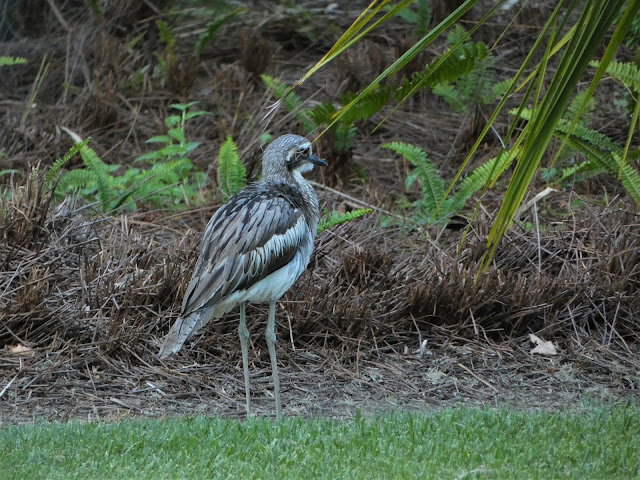








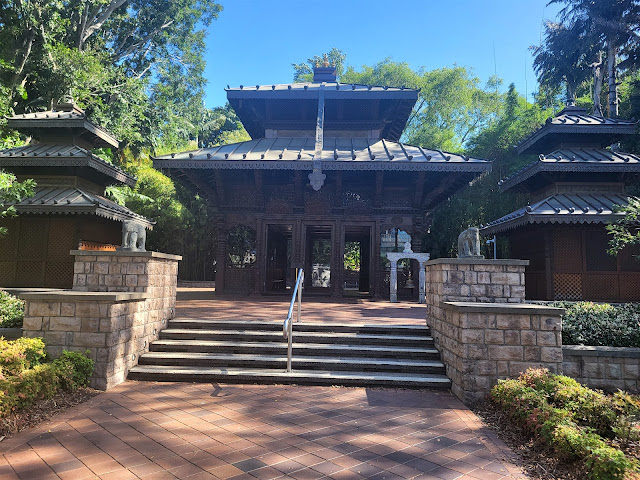

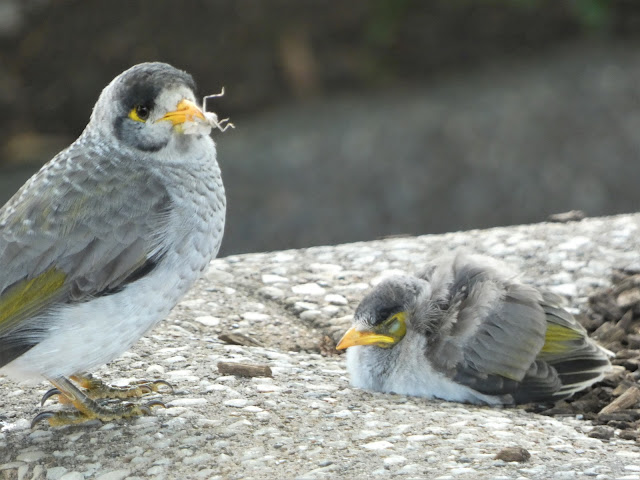








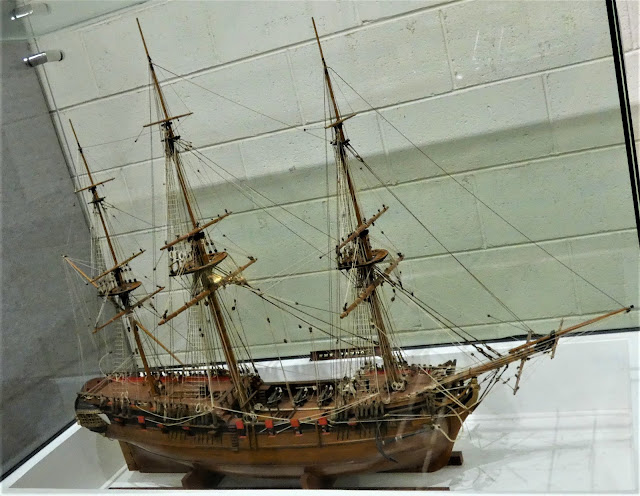













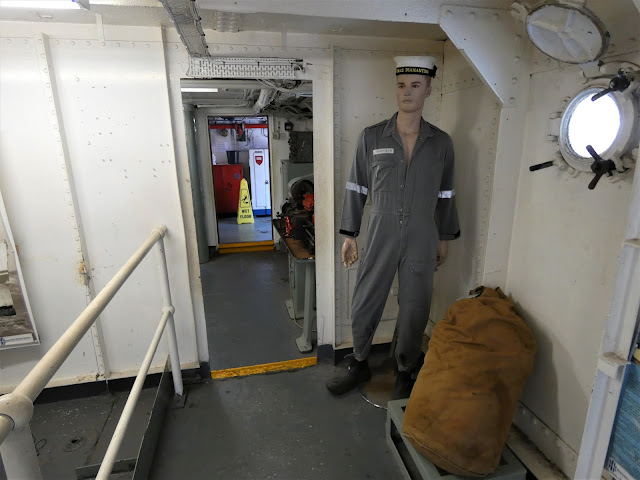





































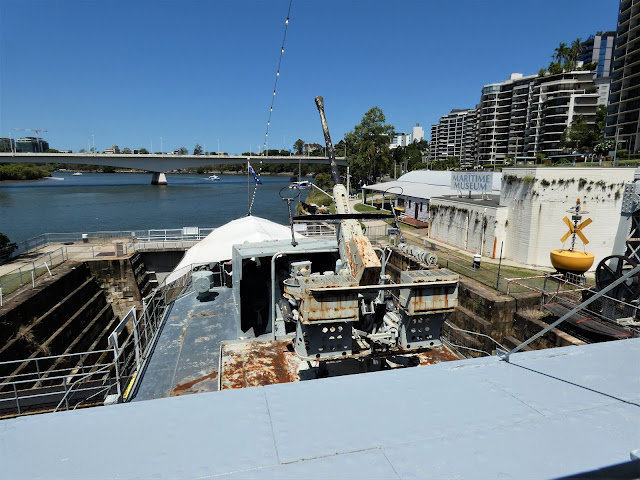







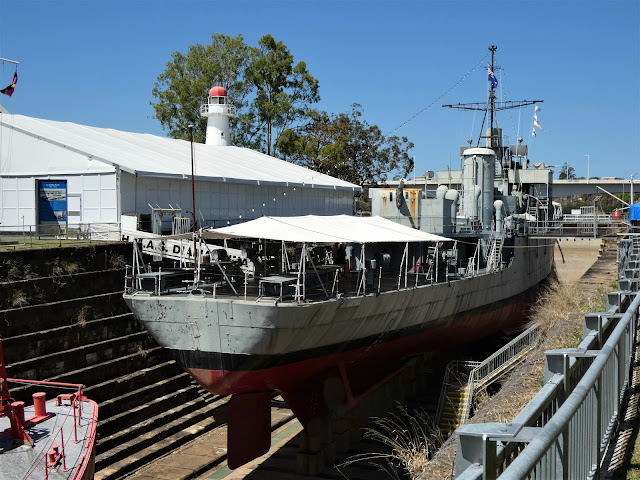















Fascinating as always. By chance I had met the daughter of a man who had worked at the National Maritime Museum. He had scratch built a Vasa amongst other things. Stunning. Unbelievably stunning by the way. If I may offer you, in small recompense, a Roland for your Oliver, I will try and get this most discrete of men to post this out there. Naturally it is museum quality.
ReplyDelete